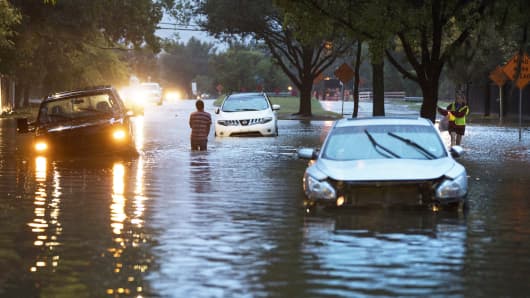With rain still falling in Texas, the initial estimates of the insured damage from Hurricane Harvey are already in the billions, a cost that could overwhelm the financially strained National Flood Insurance Program.
Insurers are bracing for a massive amount claims from Harvey after the storm's winds and surge pounded the Texas coast and dumped torrents of rain on the Houston area, flooding homes and prompting more than 1,000 rescues of stranded residents.
With the rain still falling late Monday, catastrophe modeling firm AIR Worldwide estimated that insured losses would range up to $2.3 billion.
Still, those figures cover only losses from damage to businesses and consumers that are covered by insurance. That's why total cost to repair damages from Harvey, which made landfall as a Category 4 hurricane Friday night, will likely be much higher.





